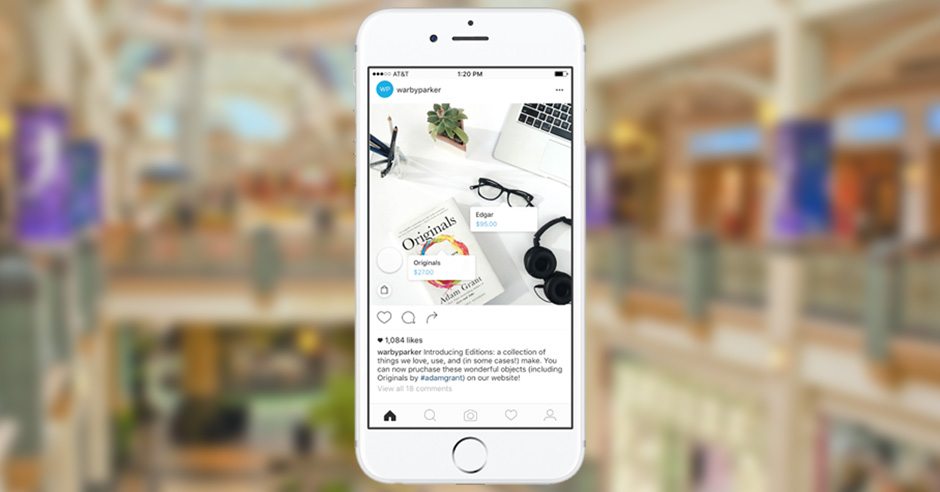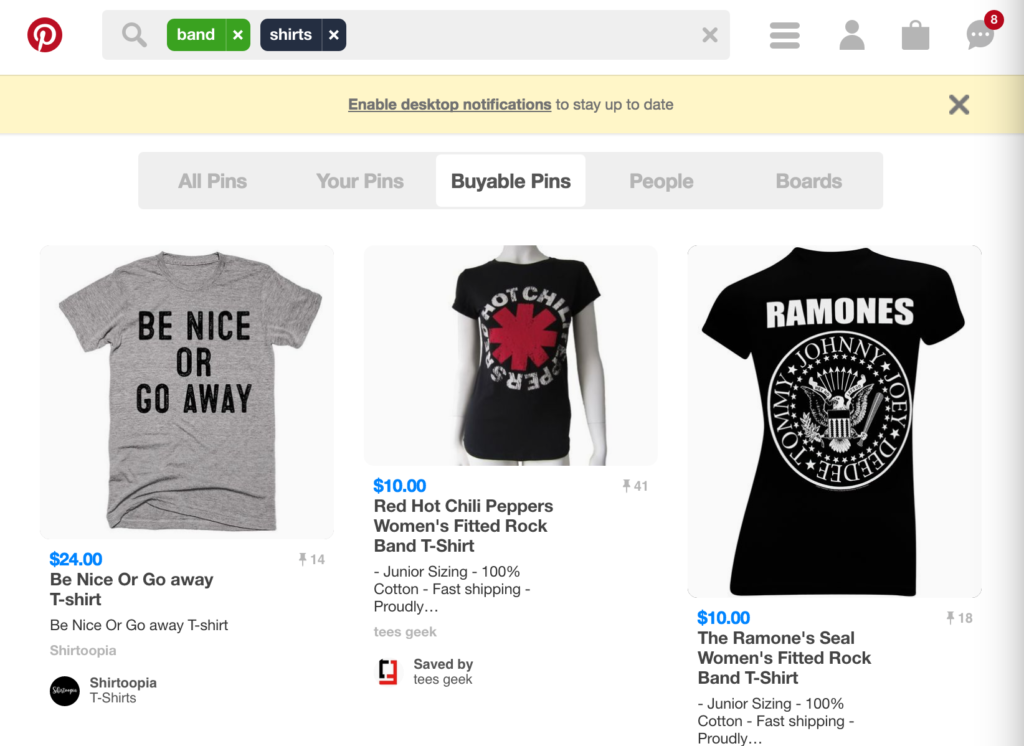Congratulate Snapchat and Pinterest on the birth of the new Instagram

Great news! Instagram is currently testing shoppable posts with a small group of iPhone users in key areas of the U.S. market. Currently, the test features an image with up to five products. By tapping the image, a small window will pop up with limited information about each product. Similar to tapping an image with tagged individuals, you’ll see a similar screen with a brand name and pricing details. These small pop ups will have the ability to drive clicks to a product’s website.

Why this is an important move for Facebook’s Instagram?
First, a little Pinterest-ing history.
In 2013 (ya, it was that long ago), Pinterest introduced what they called “useful pins.” Useful pins included an upgrade to “product pins.” Product pins were a small upgrade to how products on Pinterest were displayed. By simply including a dollar amount in the pin description, Pinterest would overlay the price on the pin photo.
The purpose, ultimately, was to drive more clicks, and that’s exactly what it did for Pinterest at a time where this still fresh on the scene social media platform could be at risk of being a one-hit wonder. Instead, by late 2015, Pinterest reached over 100 million users and continued to rise to be one of the most popular search engine platforms and social media networks online today.
Today, when you search for a product or topic on Pinterest, you’re given the option to tab over to “Buyable Pins.” Prices no longer directly overlay your picture with a little price tag image. Instead, prices are indicated in an obvious blue directly below the photo alongside the title and description you’ve given your pin.

According to Sprout Social, these kind of upgrades bring an almost guaranteed audience to your platform. 93% of pinners have shopped online in the past six months, leading us to assume that online shoppers are driven to Pinterest for easy to find products such as gift ideas with their buyable features.
In this same report, we learn that product pins receive 36% more likes than posts without. More likes and engagement translates directly into more impressions for your product!
2 million people per day save product pins to their boards. Per day! Every day!
Today, Pinterest has specific pin types for apps, locations, articles, recipes, and movies alongside their wildly successful product pins. And guess what, those post types are not far from your most cliché Instagram posts.
Instagram’s list of “most cliché” posts according to Mashable are selfies, scenery, food, nail art, quotes, architecture, coffee, and SMS conversations.
Instagram’s Statement
“More than 84% of smartphone users in the US browse, research or compare products via a web browser or mobile app. While browsing and discovery is easy on mobile, finding more information about the specific products you see isn’t always as simple. On a platform known for its power of mobile discovery, we’re excited to announce an easier experience to shop the products you love on Instagram… In an internal survey, we learned that the vast majority of purchases take a day or longer, with only 21% of purchases made within a day.”
Who gets dibs?
To start, 20 retail brands based throughout the United States will be testing these new photos. These brands include Abercrombie & Fitch, Coach, Hollister, JackThreads, J.Crew, Kate Spade, Levi’s Brand, Macy’s, Michael Kors, Warby Parker, and more.
The Future of E-Commerce On Social Media
21% of purchases are made within one day of discovering the product from a mobile device. That is up 3% from 2014!
As trends rise toward in-app purchases and mobile shopping, social media platforms have to react. Why? Social media platforms have a permanent seat at the top downloads table of any app store, and they continue to be the most used application across a variety of mobile devices.
TechCrunch predicts that Instagram won’t make money off of these shoppable posts. At least, not at first. And my prediction is, any great idea in the tech industry is immediately adopted where money isn’t an issue. The only reason Facebook won’t find profits immediately from this Instagram update is simply due to reinvesting in research.
For Facebook, it is old news that Facebook pages can include stores and shoppable items. However, some of these Facebook features and upgrades don’t take off as planned. Facebook users don’t find themselves easily informed of these updates, and the usability of these platforms is often far from obvious.
For Instagram, usability is not an issue. And for Facebook, Instagram is their save-grace to including younger demographics in their system. Preserving the future of Facebook relies heavily on the ability to capture the “Under 25” crowd and keep their interest.
For now, we can expect social media platforms to continue to test and roll out more features that allow users to make purchases without leaving the application itself. Throughout 2015 alone, mobile app users grew by 58% and applications with shopping features were among the top five app-types to receive the highest level of growth at 344% more downloads in 2015 than in 2014.
Great! Now, what should you do about it?
That’s always the question isn’t it? While shoppable posts on Instagram are not yet available to the general public, we can expect this feature or something like it to roll out across Instagram in 2017. As you create your 2017 advertising budgets and social media promotion strategies, include product posts in your strategy.
Consider the style of photography on Instagram and specifically take away ideas from photos of food, coffee art, and travel scenery as the top photo types on Instagram. Start brainstorming how you can create more clean, simple photos of your products, and consider what similar products you can partner with in order to host a “complete package” photo.
While you wait for this feature to roll out on Instagram, test these photos on Pinterest and be sure to use the product pricing features.
